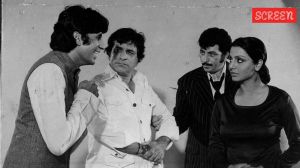Re falls to 18-month low, recovers
MUMBAI, AUG 20: The foreign exchange market witnessed turmoil as the rupee hit an 18-month low of Rs 36.14 against the dollar on early Wedn...

MUMBAI, AUG 20: The foreign exchange market witnessed turmoil as the rupee hit an 18-month low of Rs 36.14 against the dollar on early Wednesday morning trade. But it recovered soon after the Reserve Bank of India (RBI) denied reports in a section of the press that India would introduce an exchange rate band.
A business daily on Wednesday quoted Prime Minister I K Gujral as saying the Finance Ministry and the RBI are working on a band within which the rupee would be allowed to move freely against the dollar. This created a panic situation and demand for dollars outstripped supply.
As a result, the rupee hit an intra-day low of Rs 36.14 per dollar in morning trade compared to Tuesday’s level of Rs 35.71. However, the rupee recovered to Rs 35.89/92 per dollar and closed at Rs 35.90/95 after the RBI denied any such move.
The rupee traded in a broad Rs 35.70 to Rs 35.85 per dollar band for more than a year although the US currency has appreciated against major world currencies during this period. “A price correction is needed. The rupee has appreciated against the dollar in the last 2 years due to the difference in the rate of inflation. This has adversely affected the exports sector. The committee has recommended that a policy of exchange rate fluctuation within a band,” said Kirit S Parekh, noted economist and member of the Tarapore Committee on Capital Account Convertibility.
Dealers said Wednesday’s sharp fluctuations in the exchange rate were driven by inter-bank trade, with some corporate demand coming in later. "I think we all agree that the rupee is over valued," said the chief dealer at a state-run bank. "But a drop of 44 paise in a couple of hours is a bit too much."
He said trade had been largely speculative. "We saw bid/offer spreads of 6.0 and 7.0 paise today as against 0.5 paise yesterday," the dealer said. "Such large spreads indicate speculative trade."
"When the Prime Minister of the country makes a statement of this kind, there is bound to be some impact on the market," said P H Ravikumar, senior vice-president at ICICI Bank. He said the rupee fell sharply in volatile trade as market players reacted nervously to the report before recovering on the central bank denial.
The RBI said no decision has been taken on fixing an exchange rate band. "The exchange rate will continue to be determined by market forces," the RBI statement said.“The Economic Times issue of August 20, 1997, in a front page article, attributes to the Prime Minister view that the government would shortly fix a band to signal the exchange rate of the rupee in relation to the US dollar,” the RBI said, adding, “This report is misleading.”
"It is clarified that while the committee on capital account convertibility (CAC) had recommended such a band in relation to neutral real effective exchange rate, no decision in this regard has been taken by the government and the RBI."
"While the exchange rate will continue to be determined by market forces, it is recognised that the exchange rate management will have to balance the needs of the exporters to have a favourable exchange rate and the need to prevent monetary expansion from going beyond what is considered appropriate for maintaining price stability," the RBI said.In many countries, exchange rates fluctuate sharply, resulting in excessive speculation. “The `band’ concept will allow temporary fluctuations of moderate amount in the forex market preventing sharp fluctuations. This is meant to prevent excessive speculation in the Indian forex market,” Parikh said. Now that inflation has been brought under control, it is time to go for a devaluation before introducing the band, he said.RBI deputy governor Y V Reddy had told a conference of foreign exchange dealers last Friday that the rupee appeared overvalued based on an analysis of the real effective exchange rate. But the chief dealer at a Mumbai bank said the RBI should be happy with Wednesday’s fall. "At such a level there is no pressure on them to intervene aggressively and buy dollars (to arrest the rupee’s rise)."
The RBI’s intervention in the spot market, by purchasing dollars to check the rupee’s rise, pumps rupees into the banking system. This boosts money supply and stokes inflation. The RBI has bought $ 4.6 billion in the first four months of the current fiscal, beginning April 1. Dealers said it was unlikely that the rupee would rise sharply from the current level.



- 01
- 02
- 03
- 04
- 05




























